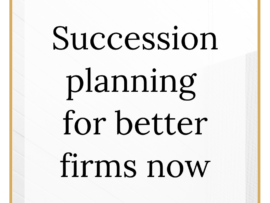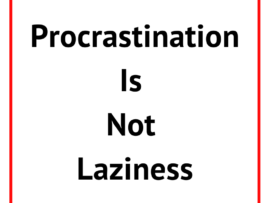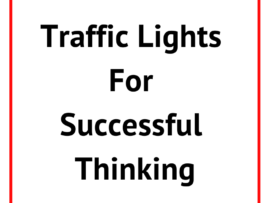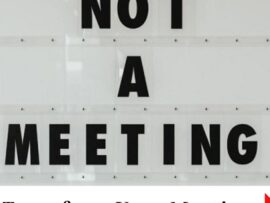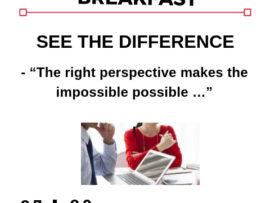The Power Of Pricing For Business Success
0 CommentsThe Power Of Pricing
A fantastic evening talking about the impact and power of pricing.
Mark Peacock (aka the Pricing Coach), shared a wealth of practical, and valuable information, at the recent Guildford EMCC Event.
Here are some key takeaways from that session.
Pricing and Profit
First and foremost, we, as businesses, need to shift our focus onto pricing.
It is a key lever for business success, yet is often overlooked.
A well thought through pricing strategy, leads the way to ensure we deliver the right products and services, at the right price, for the right customers. Giving a key indicator of quality, and leading to happier clients, and greater profit.
6 Challenges Of Typical Pricing Strategies:
1. Pricing is key to business success, and needs to be part of a well thought through strategy. Businesses often overlook, or only glimpse, at pricing. The focus tends to be on procedures, processes, marketing, products, costs, and overheads. All important. However, pricing needs to have greater focus, not least as it can create an immediate change to our business (and our customers).
2. Businesses/business owners typically don’t increase prices for five reasons: Complacency (we are growing so it must be fine), Inertia (we’ve always done it this way), Difficulty (pricing strategies feel confusing, hard, it must involve lots of math), Ignorance (unaware of different pricing strategies), and Fear (loss of clients/customers or a negative reaction to price increases).
3. Inflation matters. If nothing else, prices should be raised in line with inflation (CPR is currently 2%). Otherwise, you are now charging less. £100 in 2009 is now the equivalent of £76 in buying power. Most businesses, when raising their prices for the first time, are surprised how readily it is accepted. Going forward, review prices annually. Make it clear, in any contracts with clients, that this will happen.
4. Commonly used pricing strategies include: comparing pricing with other businesses, looking at expenses/costs and then adding a margin, setting standard day/hourly rates, following a trend of lower pricing when starting up, or taking advice from a mentor. However, these approaches don’t encourage a deeper analysis of the impact of pricing on your business. Particularly the value being delivered to customers.
5. There is an impact of not having a well thought through pricing strategy. It can mean, you won’t attract the right customers for your business, marketing won’t generate the best response rates, sales conversion rates will be too high or too low, money is left on the table, you may not give your best effort, and you won’t be maximising revenues and profits. In the long term your business may not be sustainable. Whilst the term ‘poor cash flow’ is typically referred to. A poor pricing strategy is often the reason for businesses collapsing.
6. Businesses tend to focus on volume. However, a 5% increase in volume, won’t necessarily make a change to the bottom line, depending on resources needed. Whereas, a 5% increase in price (as part of a well thought through strategy), is an instant profit change. It is also useful to understand that, a Price increase of 5% creates an increase in profits of 22%. Whereas, Revenue will increase profit by 12%, COGS by 10%, Overheads 5%, and R & D, 5%. Despite this, businesses still tend to focus on volume and costs, with pricing only occasionally reviewed (if at all). The recommendation is an equal split of time focusing on the three elements – Price (33.3%) x Volume (33.3%) – Costs (33.3%) = Profit.
Pricing Strategies
When determining pricing strategies. Businesses need to consider products, customers, competitors, costs, positioning, presentation, people, and profits.
Pricing strategies tend to fall into five categories; classical, promotional, monetisation, psychological, and customer. Most businesses tend to focus on the top right (image below), whereas the top left, can be extremely valuable.

10 Practical Pricing Tools:
1. Move away from hourly rates where possible. Whilst the pros of hourly rates are that they are easy to set up, easy to understand, and comparable. The cons include: customer value isn’t taken into account, hourly rates miss out on capturing additional revenue, earnings are capped by hours available, customers see it as a cost vs an investment, and it can lead to a race to the bottom (comparison sites).
2. Visible pricing may work, depending on your business. Lower price products can benefit from visibility of pricing online. The possibility of comparison to other sites may also be useful. High ticket services typically benefit from not having it on your website. Reasons include, any price you set then benchmarks your pricing, and sets expectation, against future change. It may put people off, albeit they would have been interested, once they understood the value of what you deliver. You may also want to have flexibility of cost, depending on the type of client.
3. Determine where you want to be in the market and align your pricing, products, and service accordingly. Fiesta, VW, or Porsche? Aldi, Sainsbury’s, or Waitrose? Ryan Air, BA, or Virgin? Your pricing, product, and what is included (including service, after care, or support packages), should be consistent across the board for that market.
4. Move away from the old paradigm of focusing first on the product, before you design – build – price – market. Move towards the new paradigm of speaking to customers first, about how interested they are in a product and the price they would be willing to pay for it, before deciding to go ahead. The price is central, you then look at the product – design – build – market. Start with knowing how much you will charge, and design your product around the price. Not the other way around.
5. Be aware of client psychology. People tend to react emotionally and justify retrospectively. Pricing can reflect anticipation of quality. Blind testing of ‘aspirin’ found a $2 product was considered significantly more effective than a 10c product. It was a placebo. The same with wine. The most expensive wine, ‘tasted better’, despite it being the same product. Your pricing sends out a strong message about the quality of your product or service.
6. Decoy Pricing is a strategy that might be useful for your business. This is where, for example, three package combinations are compared, and the last one is considered a ‘bargain’. For example with newspapers and magazines. The online copy is cheap, the printed copy, more expensive, yet receiving both, is the same price as the printed copy alone. Another strategy is Price Anchoring. One product sets the tone for how much ‘value’ the next product is perceived. In tests where people were asked to read the last two digits from their bank card, and then share how much they would pay for a bottle of wine. The higher the digit, the more they associated value, and were willing to pay a higher price for the wine. Even though they were unrelated. This can be used in other strategies.
7. Consider whether Tiered Pricing suits your business. You provide a tier of services or packages. Often it is three. The first tier is the ‘entry’ package. This has a lower price and few additional features. The second is your ‘standard’ package, which has a higher price and more features. The third is your ‘premium’ all singing, all dancing, package. Ratio of pricing tends to be 1:2:5 (a premium product should be 2/3 times more expensive than standard). As you go up in price, so do the features, or benefits. The increase of features might be a ratio of 2:5:10, or 5:10:25. One benefit of tiered pricing, includes the ability to share these options with clients, allowing them to choose their preferred package.
8. Use numbers wisely. People think in price brands. For example, with a band of £30-£39, the sum of £39 is perceived to be much cheaper than £40. Use ‘9’ for lower pricing (in the US the research shows a preference for using a ‘7’ ie £47). Round upwards, for higher ticket products.
9. Test your pricing. There is a threshold, to which you can increase your prices to, before it impacts negatively on purchases. How much more would you pay for a mobile phone, or a car, you enjoy, before you would start to look around? 1%, 5%, 10%, more? Be aware that we tend to overestimate the potential negative impact, of a price increase, on product demand. It is important to carry out research. A test, with a dress priced at $34/$39/$44, found there were more sales at $39, even though the dress was available elsewhere at $34.
10. Take a look at the competition. Who is your nearest competitor? It needn’t be geographically. It is another business that can also meet your client’s needs. The strategy which follows is not necessarily, to lower your prices. It can be useful information, that may form part of your pricing strategy, going forward.
Conclusion
As a business it is important that we explore other pricing strategies, and understand the impact of pricing, on growing our business.
There are approximately 50 pricing strategies in total (see above diagram). Each, we are assured, can be readily explained in a few minutes. Determine which could be a good fit for your business and begin to explore your options further.
I hope you have found this summary has generated some new thinking around your business, or brought back previous knowledge. That it has encouraged a review of your pricing strategy. And, perhaps, you have already decided to do something different.
If you are an SME with a revenue of 1-20 million, and would like to change your pricing strategy, or find out about what could be done, please contact Mark Peacock on mark@markpeacock.co.uk or you can find out more about his work on his website here.
Thank you again to Mark, and all of the fantastic delegates that attended.

